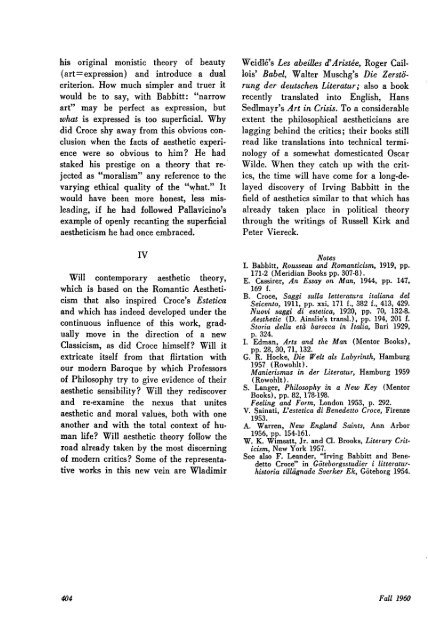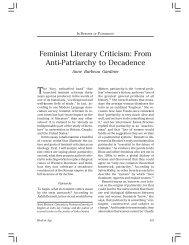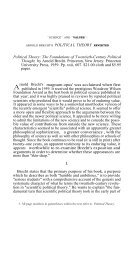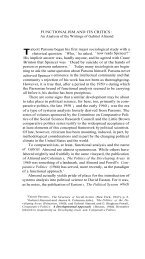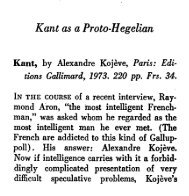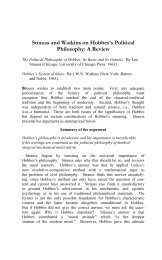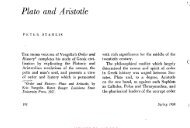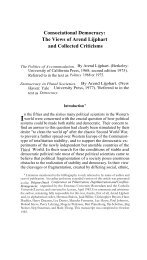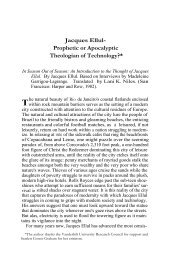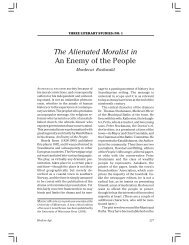Irving Babbitt the Aestheticians
Irving Babbitt the Aestheticians
Irving Babbitt the Aestheticians
Create successful ePaper yourself
Turn your PDF publications into a flip-book with our unique Google optimized e-Paper software.
his original monistic <strong>the</strong>ory of beauty<br />
(art=expression) and introduce a dual<br />
criterion. How much simpler and truer it<br />
would be to say, with <strong>Babbitt</strong>: “narrow<br />
art” may be perfect as expression, but<br />
what is expressed is too superficial. Why<br />
did Croce shy away from this obvious con-<br />
clusion when <strong>the</strong> facts of aes<strong>the</strong>tic experi-<br />
ence were so obvious to him? He had<br />
staked his prestige on a <strong>the</strong>ory that re-<br />
jected as “moralism” any reference to <strong>the</strong><br />
varying ethical quality of <strong>the</strong> “what.” It<br />
would have been more honest, less mis-<br />
leading, if he had followed Pallavicino’s<br />
example of openly recanting <strong>the</strong> superficial<br />
aes<strong>the</strong>ticism he had once embraced.<br />
IV<br />
Will contemporary aes<strong>the</strong>tic <strong>the</strong>ory,<br />
which is based on <strong>the</strong> Romantic Aes<strong>the</strong>ti-<br />
cism that also inspired Croce’s Estetica<br />
and which has indeed developed under <strong>the</strong><br />
continuous influence of this work, grad-<br />
ually move in <strong>the</strong> direction of a new<br />
Classicism, as did Croce himself? Will it<br />
extricate itself from that flirtation with<br />
our modern Baroque by which Professors<br />
of Philosophy try to give evidence of <strong>the</strong>ir<br />
aes<strong>the</strong>tic sensibility? Will <strong>the</strong>y rediscover<br />
and re-examine <strong>the</strong> nexus that unites<br />
aes<strong>the</strong>tic and moral values, both with one<br />
ano<strong>the</strong>r and with <strong>the</strong> total context of hu-<br />
man life? Will aes<strong>the</strong>tic <strong>the</strong>ory follow <strong>the</strong><br />
road already taken by <strong>the</strong> most discerning<br />
of modern critics? Some of <strong>the</strong> representa-<br />
tive works in this new vein are Wladimir<br />
Weid16’s Les abeiUes GAristBe, Roger Cail-<br />
lois’ Babel, Walter Muschg’s Die Zersto-<br />
rung der deutschen Literatur; also a book<br />
recently translated into English, Hans<br />
Sedlmayr’s Art in Crisis. To a considerable<br />
extent <strong>the</strong> philosophical aes<strong>the</strong>ticians are<br />
lagging behind <strong>the</strong> critics; <strong>the</strong>ir books still<br />
read like translations into technical termi-<br />
nology of a somewhat domesticated Oscar<br />
Wilde. When <strong>the</strong>y catch up with <strong>the</strong> crit-<br />
ics, <strong>the</strong> time will have come for a long-de-<br />
layed discovery of <strong>Irving</strong> <strong>Babbitt</strong> in <strong>the</strong><br />
field of aes<strong>the</strong>tics similar to that which has<br />
already taken place in political <strong>the</strong>ory<br />
through <strong>the</strong> writings of Russell Kirk and<br />
Peter Viereck.<br />
Notes<br />
I. <strong>Babbitt</strong>, Rorcsseau and Romanticism, 1919, pp.<br />
171-2 (Meridian Books pp. 307-8).<br />
E. Cassirer, An Essay on Man, 1944, pp. 147,<br />
169 f.<br />
B. Croce, Saggi sulla letteratura italiana del<br />
Seicento, 1911, pp. xxi, 171 f., 382 f., 413, 429.<br />
Nuovi saggi di estetica, 1920, pp. 70, 132-8.<br />
Aes<strong>the</strong>tic (D. Ainslie’s transl.), pp. 194, 201 f.<br />
Scoria della et6 barocca in ltalia, Bari 1929,<br />
D. 324.<br />
I. &Edman, Arts and <strong>the</strong> Man (Mentor Books),<br />
pp. 28, 30, 71, 132.<br />
G. R. Hocke. Die Velt als Labyrinth. Hamburg -<br />
1957 (Rowohlt).<br />
Manierismus in der Literatur, Hamburg 1959<br />
(Rowohlt).<br />
S. Langer, Philosophy in a New Key (Mentor<br />
Books), pp. 82, 178-198.<br />
Feeling and Form, London 1953, p. 292.<br />
V. Sainati. L’estetica di Benedetto Croce. Firenze<br />
1953. ’<br />
A. Warren, New England Saints, Ann Arbor<br />
1956, pp. 154-161.<br />
W. K. Wimsatt, Jr. and Cl. Brooks, Literary Crit-<br />
icism, New York 1957.<br />
See also F. Leander, “<strong>Irving</strong> <strong>Babbitt</strong> and Bene-<br />
detto Croce” in Goteborgsstudier i litteratur-<br />
historia tilliignade Sverker Ek, Goteborg 1954.<br />
404 Fall 1960


